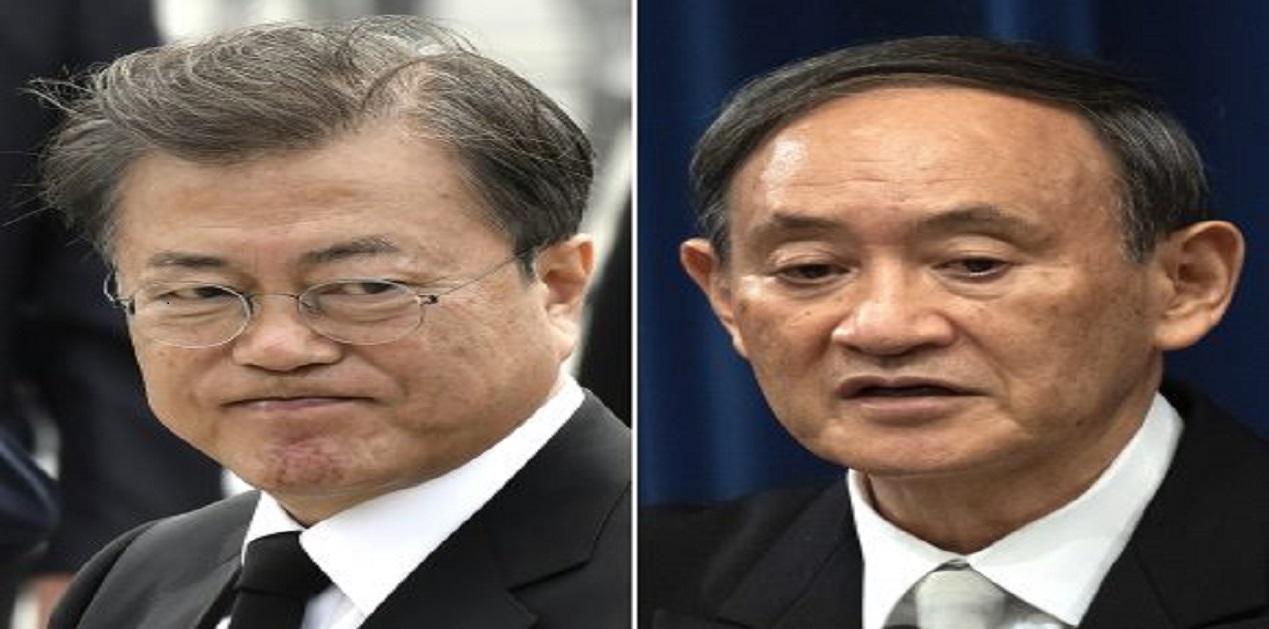The Indo-Pacific region has gradually assumed a centrality in the global strategic balance for peace and security. The stability and tranquility of the four decades after the conclusion of the Vietnam War is being challenged by an aggressive China. United States, ASEAN and the democratic countries of the region are striving to maintain peace and harmony in East Asia as the critical arena where China in seeking to change facts in its favour trampling on the territorial, maritime and strategic interests of its neighbours.
President Joe Biden has signalled United States’ determination to check China’s march towards its declared objective of military, technological and ideological domination in the Indo-Pacific region. In this endeavour President Biden and Prime Minister Boris Johnson seek to bring the democratic countries together as a superior model of humane ideology, inclusive governance and rules-based order. The 12 March virtual Summit meeting of the QUAD is also indicative of President Biden’s resolve to bring key democracies of Indo-Pacific together.
In this quest to harmonize the geo-strategic perspectives of the democratic countries the continued misunderstanding between two important US allies -the Republic of Korea and Japan- is a major impediment.
Historically, the Korean rules have been squeezed between their two strong neighbours – China and Japan. There were repeated attempts both by Chinese and Japanese rulers to seek direct or indirect domination over the Korean territory, trade and independence. Korean rulers have also attempted to hit back, where possible pitting one against the other.
Mongol invasions of Japan (1274 and 1281) were a joint attack by Kublai Khan and Korean Kingdom of Goryo against the Kamakura period Japan. Later in 1593, Hideyoshi ruled Japanese Army occupied Korean peninsula on its way to conquer Ming Dynasty China. During the war, Korean land forces lost all their battles but Korean Admiral Yi Sun-Sin inflicted decisive defeats on the Japanese fleet by skillfully using ‘Turtle Ships’. Admiral Yi’s statue occupies a prominent place in Central Seoul.
However, in 15th century, the Choeson Dynasty of Korea chose to rule under Chinese suzerainty. It adopted Confucianism as the guiding ideology and relegated Buddhism to the rural areas. Korea became a tributary state of the Imperial Court and this arrangement continued till late 19th century when Japan sought to acquire trading rights in the Korean peninsula.
Following the example of Western powers’ colonization efforts in China, the Meiji Japan sought to colonize Korea under its ‘Seikanron’ policy and mounted a punitive expedition against Korea in 1873. Japan’s victory in Russo-Japanese war and weakening of Qing Empire led to the Japan-Korea Treaty of 1905 in which Korea became a protectorate of Japan. Ito Hirokumi, the first Japanese Resident-General of Korea was assassinated by Korean nationalist An Jung-geun in 1909. An enraged Japanese leadership annexed the Korean Empire on 22 August 1910. This was done with a secret understanding from US and European powers which blessed the Japanese colonization of the Korean peninsula.
Japanese colonial rule over Korea from 1910 to 1945 was brutal and exploitative. As a policy, Japanese rulers sought to emasculate the distinct Korean culture, language and traditions. Koreans were forced to adopt Japanese names and teaching of Korean language was forbidden in the schools. Japanese nationals treated Koreans with a sense of racial superiority and this was bitterly resented by the silently suffering Korean masses. Among Koreans on both sides of the DMZ, these memories engender hostility towards Japan which persists to this day among the masses despite sporadic attempts by the ruling establishments to chart a new course of friendship and cooperation.
During the Second World War Japanese Imperial Army conscripted 5.4 million Koreans and 670,000 were sent to mainland Japan as slave labour and as ‘comfort women’ forced into sexual slavery in occupied territories designated as ‘voluntary prostitutes’.
Driven by the need of Japanese technology, investments and markets the then Korean President Park Chung-hee adopted a pragmatic policy and entered into a ‘Treaty of Basic Relations’ with Japan in 1965. The Treaty included a provision for the ‘Settlement of Problems in Regard to Property and Claims and Economic Cooperation.’ Under its terms, Japan provided South Korea with $300 million grant in economic aid and $200 million in loans together with $300 million in loans to private trusts, thus a total of $800 million financing as ‘economic cooperation’.
After the normalization of relations betweenthe two countries in 1965, the surviving ‘Comfort Women’ and the Korean Civil society have been demanding a clear apology and proper compensation from Japan. Japan has resisted these attempts by never acknowledging the role played by the Imperial Army in this shameful exploitation of Korean women. Also, Japanese official position is that the 1965 ROK-Japan Basic Treaty completely and finally settles all the claims for compensation by aggrieved Koreans.
Despite the passage of time, this emotional issue continues to generate considerable hostility among ordinary Koreans against Japan, particularly because successive Japanese governments have been somewhat evasive and shied away from a clear and un-ambiguous apology for their responsibility. This issue became a stumbling block in closer ROK-Japan ties which were a linchpin of President Barack Obama’s ‘pivot’ towards Asia-Pacific. President Barack Obama pressurized President Park Gyun-hye and Prime Minister Shinzo Abe to sign an agreement in December 2015 under which Japan made an apology and paid 1 billion yen to fund the welfare of surviving victims. Importantly, this agreement did not have public support in South Korea. When the liberal government led by President Moon Jae-in came to power this agreement was discarded in November 2018 and the Foundation to finance the agreement’s controversial agreement was shut down. To further annoy the Japanese, some Korean activists installed a statue of a ‘comfort woman’ in front of the Japanese Embassy in Seoul which further vitiated the bilateral relations.
The other issues which have long festered between the two countries are both symbolic and substantial. One is the naming of the sea between the two countries which Koreans call ‘East Sea’ and Japanese insist that it be called ‘Sea of Japan’. The other territorial issue is about the sovereignty over a group of islets in the Sea of Japan that is under the possession of Korea. The islands called ‘Dokdo’ by Korea and ‘Takeshima’ by Japan are a major source of nationalist tensions between the two countries.
Recent Developments
The two Governments’ room for compromise shrank sharply when in late 2018 the South Korean Supreme Court and high courts ruled that several Japanese companies compensate the families of South Koreans who were illegally forced to supply labour for World War II war production. For instance, Korean labour was forced to build ships and aircrafts for Japan without pay at a Mitsubishi shipyard in Nagoya in 1944. The Japanese Government vehemently protested claiming that all possible compensation issues were settled once for all under the ROK-Japan 1965 Basic Treaty and subsequent normalization of diplomatic relations.
Japan was irked by Moon Government’s stand of helplessness to act against the Korean Supreme Court and adopted a policy of indirect pressure to punish South Korean companies. In July 2019, Japan applied new licensing policies and procedures restricting automatic export and transfer of controlled items and technologies to South Korea. Upping the ante, in August 2019, Japan removed South Korea from the ‘whitelist’ of countries that have the MFN status as trade partners. This spat simmers on without an amicable resolution.
Japan and South Korea are world’s third and eleventh largest economies with a robust economic partnership. South Korea exports to Japan in 2018 amounted to $33.4 billion and imports from Japan to $53 billion. South Korea is Japan’s third largest trading partner.
The rising tension since about 2012 has hit the thriving tourist traffic between the two countries. In 2019, the number of South Korean tourists to Japan dropped by about 30% from the previous year to 5.6 million. On the other hand, the number of Japanese tourists coming to Korea rose from about 1.8 million in 2015 to 3.2 million in 2019. Japanese tourists find Korea a haven for shopping particularly of luxury items. Tourism contributes a lot to Korean economy. More than 17.5 million foreign tourists visited South Korea in 2019; of which 6 million were from China, 3.2 million from Japan and 1.2 million from Taiwan.
United States has been working assiduously to narrow the differences between its two main military allies in the Indo-Pacific. Under US pressure Japan and South Korea signed the ‘General Security of Military Information Agreement’ (GSOMIA) in 2016 but it was not approved by the Korean National Assembly. GSOMIA permits sharing of intelligence between South Korea and Japan particularly about North Korea. This Agreement is now being renewed on annual basis by the Korean Government.
In 2017, South Korea stated that it would not enter into any trilateral military alliance with the US and Japan. This has been a demand from China and the Korean government has accommodated the Chinese concerns.
In his January 2021 New Year’s address, President MoonJae-in said that he would continue efforts to build a ‘future oriented’ relationship with Japan. In a phone call following his inauguration, Prime Minister Suga Yoshihide and President Moon Jae-in have agreed to strive to improve bilateral ties in earnest.
For the democracies of Indo-Pacific region to deepen strategic cooperation, greater understanding between Japan and Republic of Korea is vitally important. President Joe Biden is likely to continue President Barack Obama’s policy of persuasion and gentle pressure to bring its two North-East Asian allies closer. Indian interlocutors also need to contribute to this effort to bring its two strategic partners – South Korea and Japan together, reminding them to appreciate the future challenges and overcome the shadows of the past.
(The paper is the author’s individual scholastic articulation. The author certifies that the article/paper is original in content, unpublished and it has not been submitted for publication/web upload elsewhere, and that the facts and figures quoted are duly referenced, as needed, and are believed to be correct). (The paper does not necessarily represent the organisational stance... More >>
Image Source: https://thediplomat.com/wp-content/uploads/2020/12/sizes/medium/thediplomat-2020-12-06-2.jpg











Post new comment